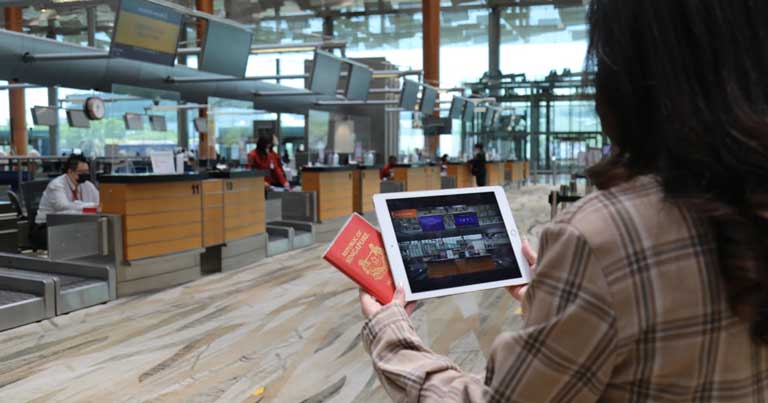
Changi Airport Group (CAG) has launched three new initiatives to better support passengers with invisible disabilities, such as autism spectrum disorder, Down syndrome, and dementia.
Aimed at creating a more stress-free and inclusive travel experience for these passengers, the initiatives include a customisable step-by-step airport guide, invisible disabilities lanyards, as well as having frontline staff trained to effectively support passengers with invisible disabilities on their airport journey.
The airport has developed the Changi Airport Social Story, jointly with experienced educators from Rainbow Centre Training and Consultancy (RCTC) to help reduce the stress of unfamiliar situations such as travelling for persons with invisible disabilities.
Comprising pictures and short descriptions, a social story is a common tool used by caregivers to familiarise persons with invisible disabilities with the various processes before they reach their destination. The step-by-step guide outlines the entire airport journey from check-in to boarding in a way that is easy to understand. Passengers and caregivers can go through the processes using the pictures in the social story during their pre-flight preparation. The file can be customised to suit each passenger’s journey and can be downloaded from Changi Airport’s website for digital or physical use.
Passengers who prefer a more discreet way of indicating their invisible disabilities now have the option to carry the Hidden Disabilities Sunflower lanyard or the Land Transport Authority’s “May I Have a Seat Please” lanyard. Airport staff have been trained to identify these lanyards and to come forward to offer additional support, such as allowing more time for these passengers to complete a particular procedure or guiding them through airport processes.
Furthermore, the airport is equipping staff with special skills to address specific passenger requirements. These staff members, called Changi Care Ambassadors, have been trained by RCTC and acquired skillsets to effectively support passengers with special needs.
“Navigating unfamiliar places and procedures while catching a flight can be stressful, especially for passengers whose disabilities may not be immediately apparent. We worked closely with experts and sought feedback from the community on how we could better support their needs at the airport. The initiatives aim to improve the overall travel experience for passengers with invisible disabilities and we hope it makes the airport a more comfortable and accessible place for them,” said Damon Wong, Vice President of Changi Airport Group’s Passenger Experience, Ground Operations and Customer Service.






